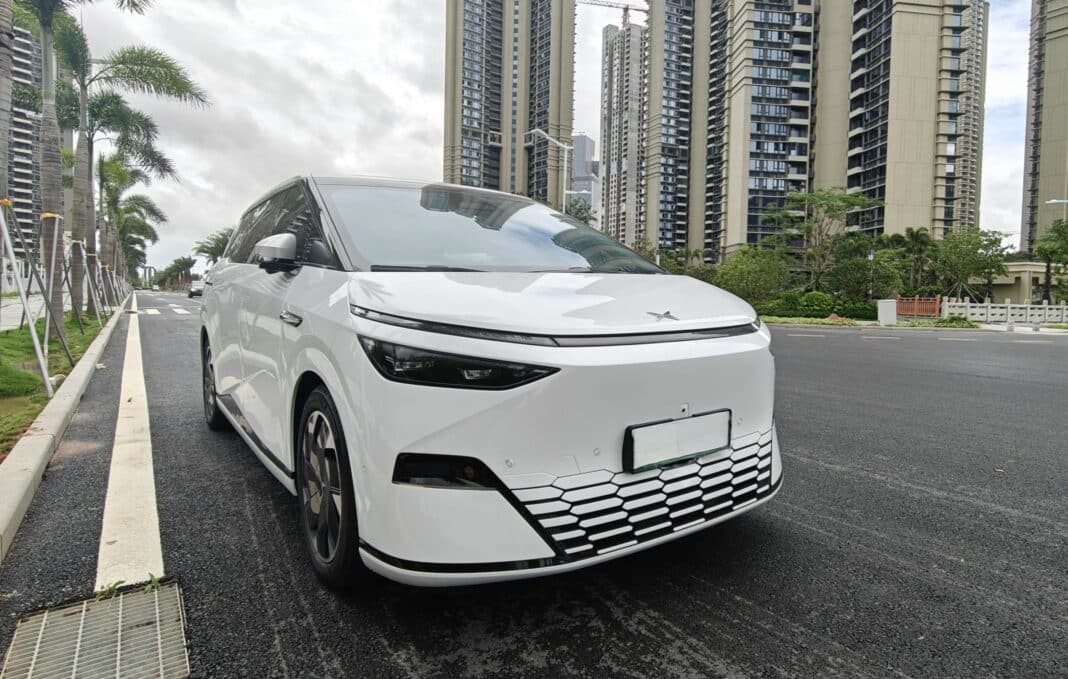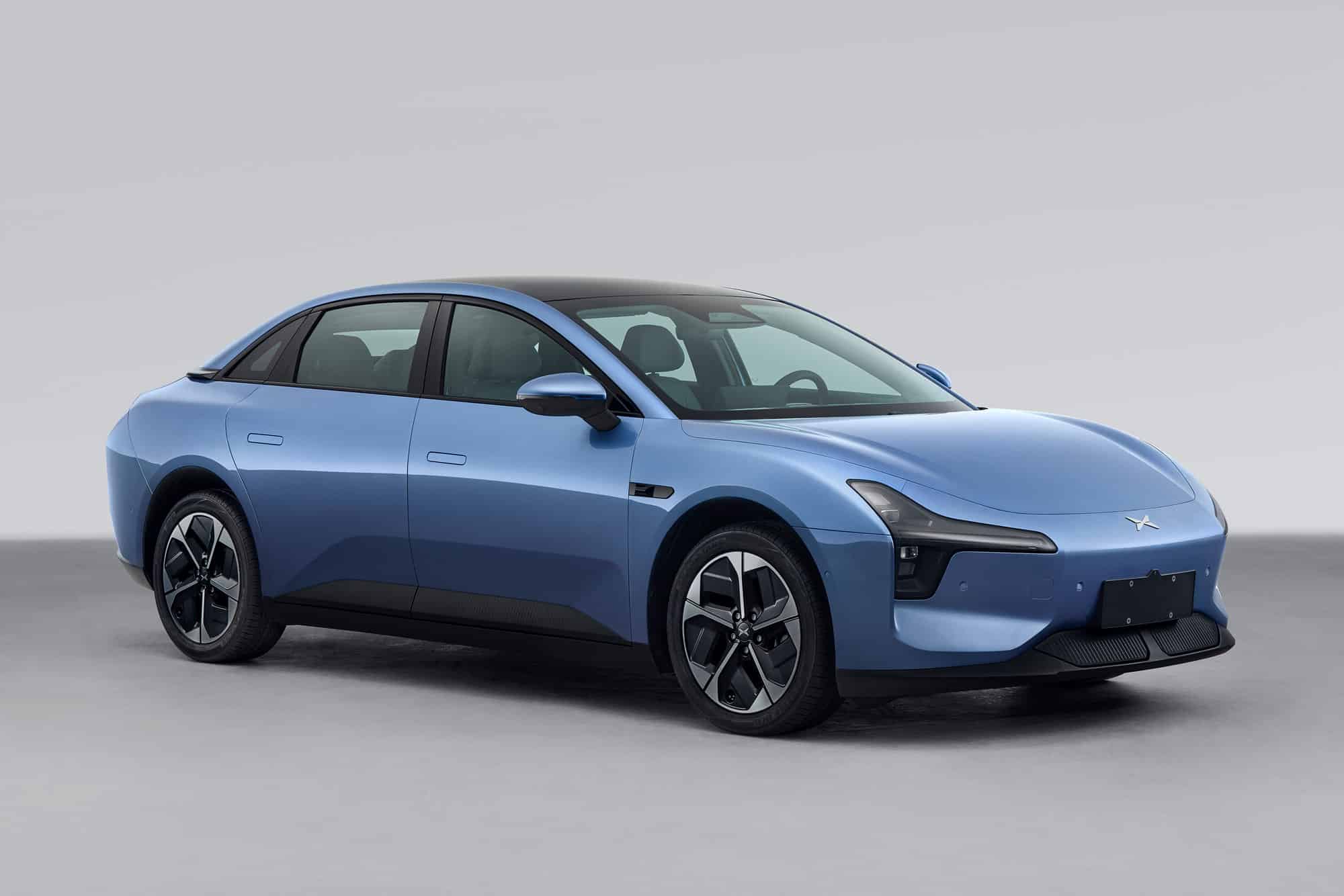Recently, China’s MPV market has seen a significant shift. Previously dominated by traditional ICE models like the Buick GL8, Toyota Sienna, and Honda Odyssey, it now includes fully electric MPVs such as the Zeekr 009, Li Auto Mega, and Xpeng X9. This week on Sunday China Drive, we will examine Xpeng’s first MPV, the X9, and evaluate its performance.
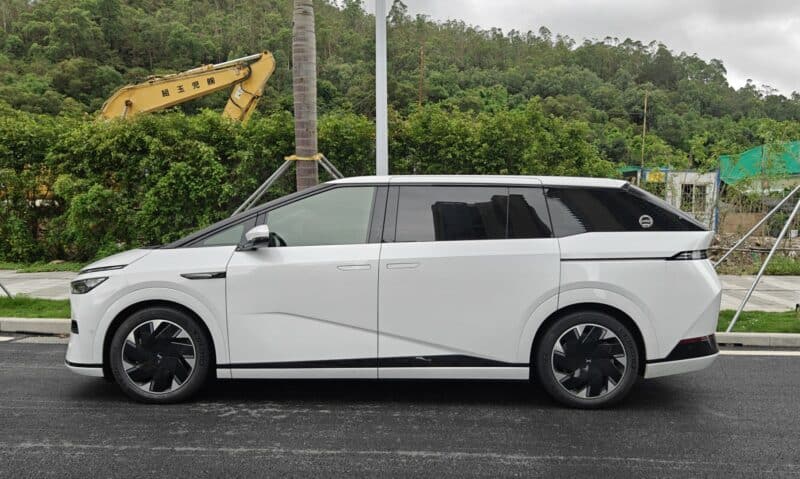
Booking for a test drive
I learned of a friend’s recent purchase of the Xpeng X9 MPV. As CNC’s test driver, I instinctively asked my friend Sunny for a test drive and why he chose this MPV.

First Impressions
The car being tested is the top-trim Xpeng X9 640 Performance Max (AWD), priced at 419,800 yuan (57,980 USD). Unlike traditional MPVs, the X9 has an elongated profile with a sloping front at 21 degrees and a rear window at 23 degrees, boasting a sleek 0.227 Cd drag coefficient. It has a closed front grille complimented with a hexagon honeycomb panel. The diamond-shaped headlights are integrated into the bumper. “The forward sensing camera is cleverly hidden under the front windscreen, unlike other EVs,” Sunny said proudly.

The Interior
The cockpit continues the Xpeng G6’s design language with added luxury. It features a blend of suede, leather, and wooden panels. The two-spoke steering wheel includes controls on both sides, while a 10.25-inch digital instrument cluster sits on top. The center console boasts a 17-inch floating touchscreen, running on XPeng’s UI powered by a Qualcomm Snapdragon 8295 chipset for a seamless user experience.

The second role includes dual zero-gravity seats with temperature adjustments, massage functions, and adjustable leg support. The third role offers lots of head and leg room for the passengers. Measured at 5293/1988/1679 mm with a wheelbase of 3160 mm, the X9 comfortably seats seven adults.



The car has a retractable 21.4-inch TV with an adjustable angle and a container for drinks that can be warmed or cooled to your preference. Additionally, it is equipped with an X-opera 23-speaker entertainment system that provides a large sound stage with lots of bass yet lacks clarity.

“The front seat is very comfortable,” I noted upon entering. “My wife complains there’s no massage function in the co-pilot seat. Imagine on a road trip: I’m enjoying a massage while driving, and the kids in the back are watching a movie and getting massages, but my wife doesn’t get one. Xpeng should offer that option,” Sunny responded. “Compared to my Honda Stepwgn, the whole family has much more fun in the X9. There is so much space,” Sunny smiled.
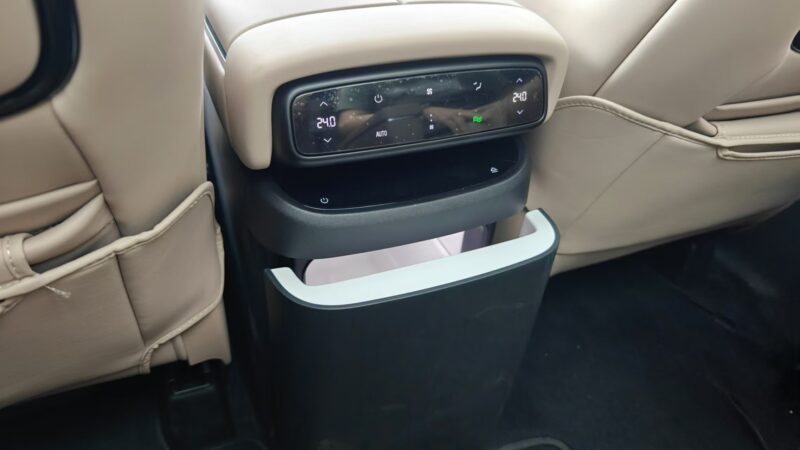
Storage
The Xpeng X9 has 755 liters of cargo space and 2554 liters when the rear seats are folded down. The rear seats fold flat into the car’s floor electronically, and the headrests retract electronically, too. This is one cool feature.

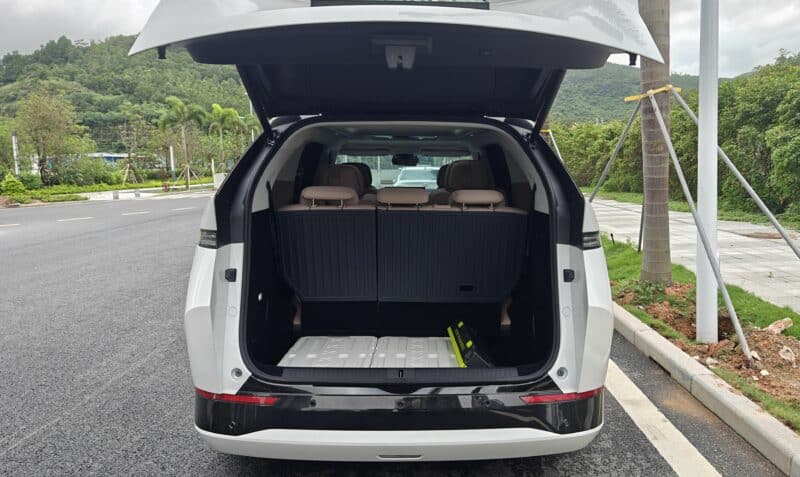
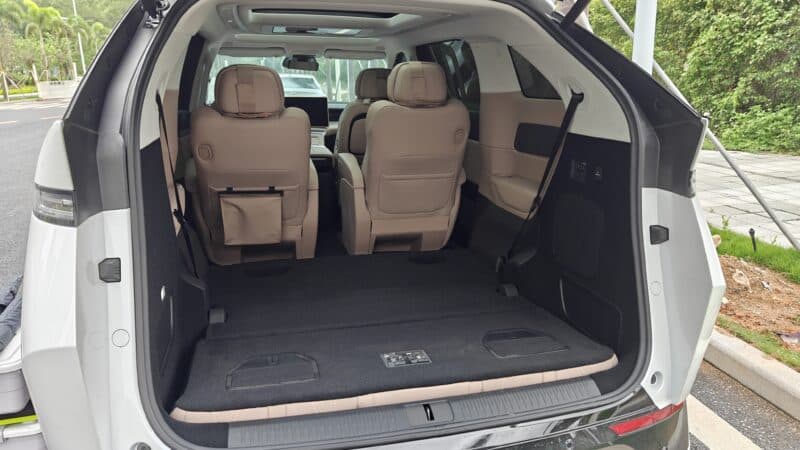
Behind the Wheel
The Xpeng X9 is undoubtedly a big car to drive. However, built on Xpeng’s SEPA2.0 (Smart Electric Platform Architecture) with double wishbone independent suspension at the front and a multi-link independent suspension at the back, the X9 is a smooth and comfortable ride. “The dashboard, together with the sloping nose of the car, is very long, making it difficult to see the car’s distance in front,” Sunny said. The thin A-pillars offer good visibility. The steering is responsive. Aided by four-wheel steering, the X9 features an impressive 5.4-meter turning radius, and maneuvering through city streets and parking lots is manageable. As a reference, the turning radius for the Mini Cooper is 5.3 meters.

On the highway, the X9 maintains a stable and quiet ride. It has a 235 kW front motor and a 135 kW motor at the rear, totaling 370 kW with 640 N·m. Even at 2630kg, the X9 has more than enough power to overtake and climb hills. The Xpeng X9 can do 0 – 100 km/h in 5.7 seconds. If there were ever a drag race in an MPV category, the X9 would beat the mighty Toyota Alphard 3.5 V6 (0 – 100 km/h in 8.3 seconds). On a side note, the X9 also costs a lot less to run.

“Let me show you Xpeng’s XNGP advanced driver-assistance system,” Sunny said eagerly. “This is the main reason I picked the X9.” XNGP relies not heavily on high-precision maps but rather its cameras and sensors. We allowed the autonomous driving system to take over on the busy suburban roads in Zhuhai, China. Soon after, we passed a bus stop on our right, and a bus started moving. The X9 slowed down a lot when detecting large objects. Moving along, the X9 accurately detected objects around our car, enabling it to adjust speed and change lanes accordingly. There were occasions when the X9 made lane changes aggressively.

X9 drivers must be aware that certain road conditions may make the XNGP system hesitant. These include U-turns, exiting the highways, fast cars approaching from the rear, and making right turns (when traffic lights do not apply). As the Lane Centering Control (LCC) kicks in, the car will signal the driver to take over. At the time of testing, the X9 was running on XOS 5.1.0.8906.

Xpeng claims its end-to-end large model is trained on over 1 billion kilometers of video data, 6.46 million kilometers of real-world testing, and 216 million kilometers of simulation testing. By the third quarter of this year, Xpeng targets covering all of China with its XNGP, aiming to provide an urban autonomous driving experience comparable to its highly acclaimed highway autonomous driving by 2025.
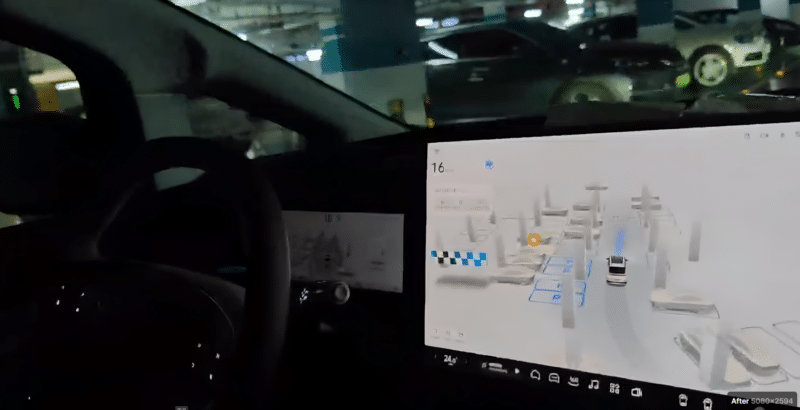
Arriving back at the car park, we stopped the car. Sunny made some selections on the touchscreen, and the X9 started driving itself again. “The car has recorded the path to my parking spot and will now go there. The valet parking system will also put on its indicators as it makes turns,” Sunny explained.
Battery Range
Xpeng X9 640 Performance Max (AWD) offers 640 km CLTC, translating to 510 km in the real world.

Safety Features
- Safety cage: it has an aluminum die-casting body structure and a safety cage made of 2,000 MPa steel, meeting global safety standards
- Collision safety: 19 ring-shaped safety designs, meeting international safety standards
- Level 2.5 Advanced Driver Assistance System (ADAS): includes Autonomous Emergency Braking (AEB), Adaptive Cruise Control (ACC), Lane Keeping Assist (LKA), Blind Spot Monitoring (BSM), Traffic Sign Recognition (TSR), and Automatic Parking Assist (APA)4


Conclusion
During the test drive, we pulled the car over on the side of the street. Sunny and I were relaxing in the zero-gravity seats in the second role. The massage seats reclined, and the leg supported up, watching Godzilla vs Kong with the air-con turned on. This would have been a guilty pleasure in a traditional ICE MPV. I can only imagine how much fun Sunny’s family has with the X9.

I learned something from this test drive. When picking a new family car, the emphasis is “family.” While Sunny enjoys his tech and looks forward to his next OTA update, the wife and the kids should equally enjoy the entertainment and ride quality the car may provide. The Xpeng X9 is the starship that Sunny chose to carry his family on their new adventures.
Stay tuned for next week’s Sunday China Drive at Car News China, where you can get more evaluations of Chinese EVs from a first-person perspective.

